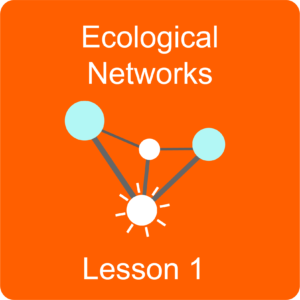Lesson 1 – Introduction to Extremophiles
 Description: In this activity, the students will be introduced to the fascinating world of extremophiles. The students will brainstorm questions and research these unique organisms. In the following lesson, students will be presented with a real life example of an event that affected the Great Salt Lake ecosystem, the building of a causeway.
Description: In this activity, the students will be introduced to the fascinating world of extremophiles. The students will brainstorm questions and research these unique organisms. In the following lesson, students will be presented with a real life example of an event that affected the Great Salt Lake ecosystem, the building of a causeway.
This lesson should be taught after the Intro to Systems module is complete.
Objectives
See the NGSS listed in the left-hand menu and below and the standards addressed page for all standards (Science, Math, Literacy, 21st Century Skills) addressed. In addition, for this lesson, here is a breakdown of:
What Students Learn:
- Extremophiles are organisms that live in harsh environments and are members of the part of the Archaea domain.
What Students Do:
- Students research their own questions using provided Introduction to Extremophiles reading packet.
Instructions
Overview
In this activity, the students will be introduced to the fascinating world of extremophiles. The students will brainstorm questions and research these unique organisms. In the following lesson, students will be presented with a real-life example of an event that affected the Great Salt Lake ecosystem, the building of a causeway. Based on observations of this phenomenon, students will generate hypotheses about factors affecting the growth of one prominent extremophile organism in this ecosystem, Halobacterium. They will then think about how they could design an experiment to test their hypotheses. This will lead to the implementation of an experiment testing the affect of salinity on the growth of Halobacterium. In following lessons, the concept of networks will be expanded to include biological networks. Specifically, the students will be creating a network of the interactions existing in the Great Salt Lake ecosystem.
- Show a video of extreme skateboarding or talk about the man who skateboarded over the Great Wall of China (an extreme skater). Discuss and hook about the fact that extreme humans exist. These people are risk-takers, and they ultimately are as mortal as the rest of us.
- Tell students that there actually are organisms called extremophiles on Earth.
- As a class, brainstorm what an extremophile could possibly be. Record ideas on the whiteboard. Ask students where they think these “extreme” organisms called extremophiles may live.
- Students may come up with ideas such as organisms that live in extreme temperatures, acidity, and may even suggest something like withstanding extreme pressure. (There are no right or wrong answers at this point, all student answers are accepted.)
- Students may suggest that extremophiles live in volcanoes, sulfur springs, etc. All answers are accepted and recorded.
- Use the Extreme life PowerPoint (Google Slides | PowerPoint) and Extreme life script (Google Doc | Word Doc) to show pictures of deep sea vents, sulfur springs, and other examples of extreme environments with living organisms. Characteristics that make the environments harsh such as temperature, pressure, lack of oxygen, lack of light, metabolic toxins, etc. should be discussed. This could be connected to the idea of “extreme” in marketing such as extreme sports, extreme flavor Doritos, etc. Video clips can be used. Teacher avoids discussing salt environments, unless the students suggest it.
STUDENT GENERATED QUESTIONS ON EXTREMOPHILES
- Guide a discussion for students to generate many questions about extremophiles such as: How are extremophiles classified? Where do they live? What is their source of energy? How do they tolerate different abiotic factors? Where did they come from? See the Intro to Extremeophiles Suggested Questions (Google Doc | Word Doc) for examples.
- Record the questions on the board. Prompt if question-generation runs out. NOTE: The focus should not be on salt and Halobacteria in this section. Students will focus on and learn more about Halobacterium in the upcoming lesson. Students should not use the Internet as a resource at this point. They will be using the Internet at a later point.
STUDENTS RESEARCH QUESTIONS ABOUT EXTREMOPHILES
- Using the provided Extremophile reading packets (Domain Archaea (Google Doc | Word Doc), Life in Extreme Environments (Google Doc | Word Doc), Rock-eating microbes (Google Doc | Word Doc), students will split into groups of 3-4 and research teacher assigned questions (the ones generated by the class).
- Have students report out the answers to their questions. Depending upon the available class time, students can give oral presentations with transparencies, and/or use butcher paper for posters.
You completed Instructional Activities for this lesson. Please move to Assessment via the tab above.
Assessment
How will I know they know…
- Student presentations.
Resources
- Extreme life.ppt (Google Slides | PowerPoint)
- Extreme life script.doc (Google Doc | Word Doc)
- IntroExtremSuggQuestions.doc (Google Doc | Word Doc)
- Domain Archaerevised.doc (Google Doc | Word Doc)
- Life in Extreme Environmentsrevised.doc (Google Doc | Word Doc)
- Rock-eating microbes.doc (Google Doc | Word Doc)
Accommodations
Provide students with more focused support in finding information within the readings. Break apart readings into smaller articles and read aloud excerpts as a class. Help students orally summarize paragraphs after they read.
Extension
Have students build a Cytoscape network using the blank template in the cell phone simulation program, from Lesson 2, to map out an extremophile´s environment or interactions. For uploading a network diagram: cellphonesim.systemsbiology.net
Have students make a ‘wanted’ poster of an extremophile. This would be a good way to address classification and encourage students to become familiar with a variety of organisms. Extremophile Wanted Poster Teacher Tips for this model organism activity can be used for Extremophiles (instead of model organisms). A variation of this activity is found in Lesson 1 of the ‘Environmental Influence on Gene Networks‘ module.

